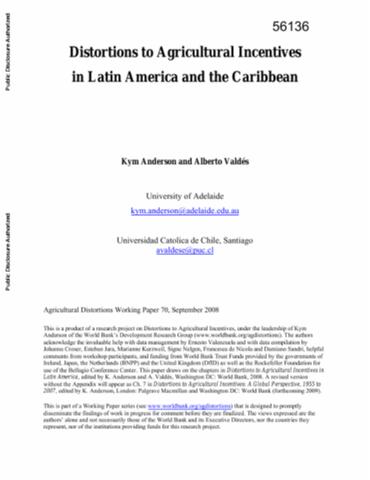Resource information
This study on Latin America is based on a sample of eight countries, comprising the big four economies of Argentina, Brazil, Chile, and Mexico; Colombia and Ecuador, two of the poorest South American tropical countries; the Dominican Republic, the largest Caribbean economy; and Nicaragua, the poorest country in Central America. Together, in 2000-04, these countries accounted for 78 percent of the region's population, 80 percent of the region's agricultural value added, and 84 percent of the total gross domestic product (GDP) of Latin America. The key characteristics of these economies-which account for only 4.5 percent of worldwide Gross Domestic Product (GDP), but 7.7 percent of agricultural value added and more than 10 percent of agricultural and food exports. The table reveals the considerable diversity within the region in terms of stages of development, relative resource endowments, comparative advantages and, hence, trade specialization, and the incidence of poverty and income inequality. This means that these countries represent a rich sample for comparative study. Nicaragua's per capita income is only one-seventh the global average, while the incomes of Colombia and Ecuador are one-third of this average. By contrast, the per capita incomes of Argentina and Chile average just one-eighth below and that of Mexico is one eighth above the global average. Only Argentina, Brazil, and Nicaragua are well above the global average in endowments of agricultural land per capita; the Dominican Republic and Ecuador are well below this average; and Chile, Colombia, and Mexico are a little less than one-third above the average.


